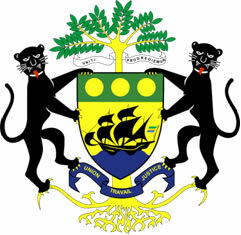The United States of America has known a great period of economic prosperity since its independence, in the 18th century, until the territorial expansion policy, carried out in the 19th century. The main objectives of territorial expansion resulted from the consolidation of capitalism and the need to guarantee raw materials and consumer markets for industrialized products.
From this need for territorial expansion, in 1862, a policy regulated by the US government, called Homestead Act or the Settlement Law, which had as its main purpose the occupation of the lands to the west. This occupation took place from the moment the government offered, for a small amount, a gleba (plot of land) to the families that accepted to occupy and cultivate them. The large numbers of foreigners who landed in the US were attracted by the Settlement Act.
As a result of the occupation of the western territories, the modernization of transport systems took place. Railroads and steam navigation were implemented, which facilitated the movement of people and goods. The formation of the
belts (plantations of corn, wheat and cotton) and the increase in the creation of cattle and swine. The USA became, mainly in the 19th century, the greatest agricultural power in the world.With the sharp growth of the US economy, mainly as a result of territorial expansion and the March for the West, we must ask ourselves: what happened to the indigenous populations that occupied most of the lands West?
As we will see, with the occupation of the territories to the west, after the approval of the Settlement Law in 1862, the populations indigenous peoples were being fought, pushed out of their lands and exterminated during the occupation process. territorial.
Millions of Indians were decimated and exterminated, constituting the greatest victims of the March to the West. With the Settlement Law, the government sold land without the authorization of the real owners: the indigenous peoples, who inhabited these lands centuries before the arrival of the Europeans and settlers.
The Settlement Act excluded indigenous peoples from the right to citizenship, not considering them to be US citizens. The process of extermination of the indigenous population took place gradually; struggles and conflicts between settlers and Indians were inevitable. From the moment the settlers acquired the lands, through the government, they did everything to expel the indigenous people. The big companies, which built the railroads in the interior of the USA, paid snipers to kill the bison (an animal that was the main source of food for the indigenous people), thus, with the shortage of bison, several indigenous people would die of hunger.
In addition to the struggles between Indians and settlers, the extermination of indigenous peoples was accentuated with the intervention of the US army soldiers, as they carried out massive massacres against villages whole. The expansion and occupation of the territories to the west brought the strengthening of the US economy, however, in exchange for industrial and capitalist expansion, millions of Indians lost their lives and were extinct.
Leandro Carvalho
Master in History
Source: Brazil School - https://brasilescola.uol.com.br/historia-da-america/lei-povoamento-os-povos-indigenas.htm



